Западноевропейское искусство от Джотто до Рембрандта - [5]
VI. Summarize the text.
VII. Topics for discussion.
1. Masaccio's artistic heritage.
2. Masaccio's impact on art development.
Unit III Mantegna (1431-1506)
Andrea Mantegna was the first major north Italian artist to experience the full force of the Florentine Renaissance. In 1454, the year of Donatello's departure from Padua, Mantegna began, with several older artists, a series of frescoes in the Chapel of the Overati family in Padua. He finished the frescoes himself in 1457 when he was twenty six years old.
The air-raid on March 11, 1944 completely destroyed the chapel containing Mantegna's early works. Only two of the frescoed panels on the lower part of the right wall were saved the Martyrdom and the Burial of St. Christopher, and the Assumption in the apse. Almost all the colour is gone from the two frescoes the Martyrdom and the Burial of St. Christopher, but one can still detect the novelty of the background perspective. In the middle of the cove of the apse, the Virgin Mary disappears behind a high archway lifted up towards the sky in all her physical presence. We follow her as she rises slowly along with the Apostles who stand below against the sides of the arch. The upturned face seen from below with the eyes raised is extremely beautiful.
The few small fragments of the Martyrdom of St. James (1454-56) collected from the pile of ruins and put together in a photomontage have been placed on the left wall. The photo-montage of the Martyrdom of St. James demonstrates the high level of perfection achieved by the young Mantegna in rendering the three-dimensional illusion.
Saint James Led to Execution is a triumph of Renaissance spatial construction and Renaissance Classicism. The perspective is calculated for the eye level of a person of average height standing on the floor below. The effect of figures moving in an actual space is startling. The ground disappears and the figures recede. Within Mantegna's carefully constructed space, the figures look like animated statues, carved rather than painted. But their marmoreal hardness only intensifies the drama. James on the way to martyrdom, turns to bless a kneeling Christian who has broken through the Roman guards. The movements of the figures, the gentleness of the saint, and the emotion of the moment are as severely controlled as the perspective.
In 1474 Mantegna finished the frescoes for the castle of the Gonzaga family, marquises of the principality of Mantua. The Gonzaga frescoes are continuous around two sides and over the vaulted ceiling of a square chamber. They present scenes from contemporary court life. The frescoes have been painted in such a way that the fireplace and other architectural elements of the room are incorporated into the composition. The scene with the family surrounding the ruler and his wife, which is painted over the fireplace, appears to have the figures actually standing and seated upon the mantelpiece, and the leather curtains which were part of the original hangings of the room are echoed in the painted curtains that close off some scenes. In one fresco Francisco Gonzaga is greeted by his father, the marquis, and by the bishop of Mantua, other dignitaries and some charming children on his return from Rome, where he had been made a cardinal. The background is not Mantua, but an ideal Italian city on a hill, the circular walls are seen in perspective. Outside them can be seen Roman ruins and statues. The colouring was undoubtedly more brilliant before certain portions peeled off in the course of time.
The centre of the ceiling is Mantegna's most astonishing perspective prank. We seem to be looking up into a circular parapet as up through the mouth of a well, above which are sky and clouds. Winged children clinging to the parapet are seen in sharp perspective from front and rear, and across one end runs a pole, which if it rolled a bit, would allow a large tub of plants to fall on our heads. Ladies-in-waiting, including one black servant, peer over the edge, smiling at our discomfiture. With this odd beginning commences the long series of illusionistic ceiling and dome paintings that continued for three centuries and spread from Italy throughout Europe.
In the long bas-relief-like painting the Introduction of the Cult of Cybele into Rome Mantegna reveals his sculptural tendencies and grave attitude to classical antiquity. His figures take on the rigidity of stone. The Madonna and Child with Magdalen and S. John the Baptist Mantegna painted with a simulated marble framing. As through a window the observer meant to look at these statue-like figures whose draperies fall into heavy folds.
Late in life Mantegna painted the Dead Christ on canvas and in scurto (extreme foreshortening), intended not as a trick in this case but as a device to bring home to the observer the personal meaning for him of Christ's sacrificial death. The weeping Mary and John are likely later additions.
Mantegna was a printmaker. Seven engravings by his hand and many by his followers established a graphic art tradition in the late fifteenth century in northern Italy.
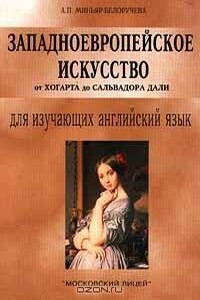
Тексты настоящего пособия охватывают почти три века истории западноевропейского искусства от Хогарта до Сальвадора Дали. Это позволяет обучаемым наряду с усвоением обширного лексического материала, приобрести культурологические знания, поскольку тексты содержат информацию о жизни и творчестве крупнейших западно-европейских художников XVIII – XX вв. Система упражнений направлена на усвоение лексического материала и развитие навыков устной речи.Данная книга является второй частью цикла учебных пособий «Западноевропейское искусство (для изучающих английский язык)».
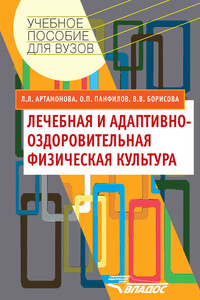
Пособие предназначено студентам факультетов физической культуры, осваивающих данную дисциплину в рамках учебной программы (аудиторные и внеаудиторные занятия, учебная практика), работникам оздоровительно-реабилитационных центров, центров адаптивной физической культуры, педагогам дошкольных и школьных образовательных учреждений различного профиля, методистам ЛФК и специалистам многих профессиональных направлений для проведения физкультминуток, физкультпауз и других двигательных форм с целью общего физического воспитания и снятия утомления на уроке.
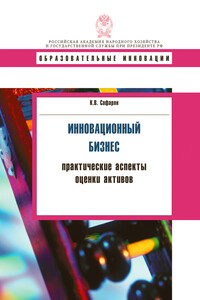
Знание основных способов оценки стоимости инновационного бизнеса и умение их использовать необходимы сегодня каждому руководителю, принимающему решение об инвестициях, о развитии и расширении бизнеса. Опенка стоимости инновационного бизнеса имеет ряд принципиальных особенностей и требует специальных подходов, так как применение традиционных сравнительных опенок затруднено ввиду отсутствия аналогов. Учебное пособие позволит получить представление о нормативном и техническом регулировании оценочной деятельности, о подходах и методах оценки, об особенностях опенки инновационных проектов.
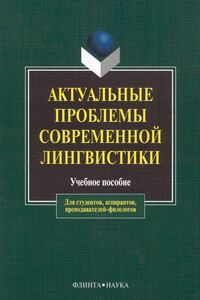
Предлагаемое пособие включает развернутую программу учебной дисциплины «Актуальные проблемы современной лингвистики», хрестоматию и систему заданий творческого и проблемного характера. Издание призвано обеспечить изучение цикла общелингвистических дисциплин: «Теория языка», «Общее языкознание», «Актуальные проблемы современной лингвистики», включенных в блок специальных дисциплин государственного образовательного стандарта по направлению «Филология», а также в образовательный стандарт подготовки магистров по направлениям «Филология» и «Языковое образование».Для студентов, магистрантов, аспирантов, преподавателей-филологов.6-е издание.
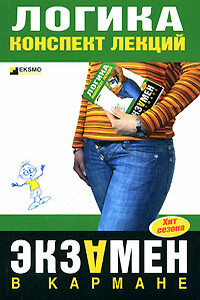
Настоящее издание представляет собой конспект лекций по дисциплине «Логика». Конспект лекций составлен в соответствии с общегосударственным стандартом по указанной дисциплине, поможет систематизировать полученные ранее знания и успешно сдать экзамен или зачет по логике.Издание предназначено для студентов, преподавателей и аспирантов юридических вузов и факультетов.

В книге рассказывается история главного героя, который сталкивается с различными проблемами и препятствиями на протяжении всего своего путешествия. По пути он встречает множество второстепенных персонажей, которые играют важные роли в истории. Благодаря опыту главного героя книга исследует такие темы, как любовь, потеря, надежда и стойкость. По мере того, как главный герой преодолевает свои трудности, он усваивает ценные уроки жизни и растет как личность.
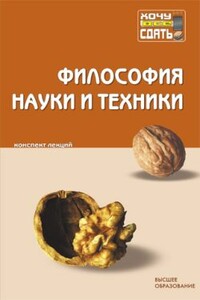
Непосредственной сдаче экзамена или зачета по любой учебной дисциплине всегда предшествует достаточно краткий период, когда студент должен сосредоточиться, систематизировать свои знания. Выражаясь компьютерным языком, он должен «вывести информацию из долговременной памяти в оперативную», сделать ее готовой к немедленному и эффективному использованию. Специфика периода подготовки к экзамену или зачету заключается в том, что студент уже ничего не изучает (для этого просто нет времени): он лишь вспоминает и систематизирует изученное.Подготовлено в полном соответствии с требованиями приказа Министерства образования Российской Федерации от 17 февраля 2004 г.